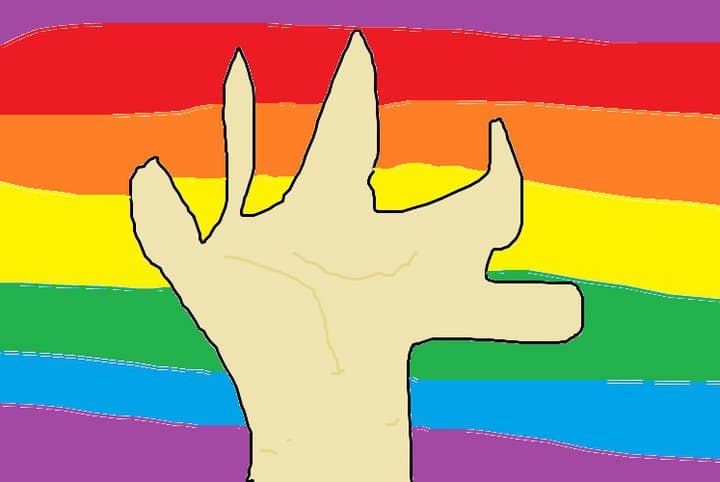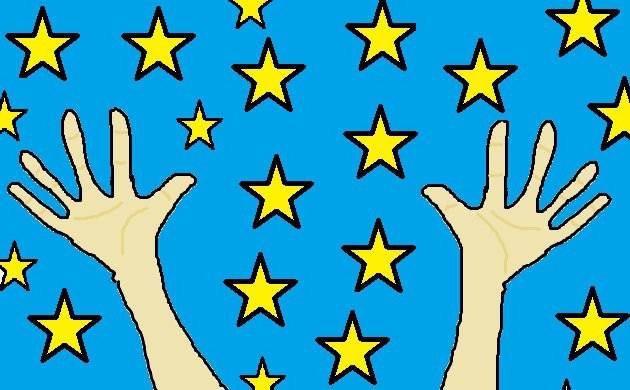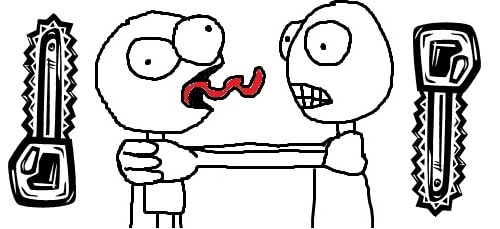Gather round, boys and girls, it’s time for another installment of Community Manager Confessions. If you’re unfamiliar with this social-media-secret-spilling series, it’s because we just created it today.
Before we begin, let’s take a moment to exchange a high five with one another. Yes, high fives. Remember those? You know, you put your hand up – yep, yes, just like that, right – very good, and then I swoop in and slap your palm with my palm, but not too hard! Just a nice, even “Yeah, buddy!” high five to show you’re recognized, and your awesomeness is appreciated, and hopefully, vice versa. Ready?
WABOWWWSLAP!
There, didn’t that feel awesome?
It did, didn’t it?
But, why?
Maybe because it made you feel special. It’s a human connectivity type-deal. You were shown some attention in the form of a groovy, enthusiastic gesture. You were rewarded simply for being here and taking the time to hang out.
Isn’t that sort of what being a community manager is all about? It’s certainly one of the pillars, anyway… making your cyber-citizens feel valued, finding little ways to keep them engaged, happy, excited, and glad they decided to join your company’s cyber-clan.
Of course, there’s much more to the community manager job description. It can’t all be sunshine and pussy cats. We’re firm believers in a data-driven approach to community management, undertaking serious research and deep conversation mining to help make more friends who matter, friends who are more likely to engage, evangelize… convert.
Incentivizing membership and participation by, for example, promising discounts or prizes, is far from unheard of, and can be a truly effective amplification tactic, when carefully executed.
But it can also go horribly, horribly awry. The company willing to essentially “buy” its Facebook fans or Twitter followers by way of a contest or other giveaway better understand that those “friends” are arguably there because you enticed them with some monetary catalyst.
Yes, that catalyst got them to “like” the page, but did it get them to actually like the brand? How long will those fans engage, or even stick around, once the contest is over and the allure of winning that big-ticket prize has flown the coop?
If, post-contest, you’re aggressively committed to providing ongoing value for your newly amassed community, your chances of hanging onto those members, and cultivating them into an army of brand evangelists are good.
But what if you don’t even get the chance to do so? What if the contest meant to grow a community ends up destroying the community before you even get the chance to play with it?
Let’s conclude with a story of how one online community in turmoil, ripped apart by unhealthy competitiveness over a flatscreen plasma TV, was brought back to a state of peace and harmony, thanks to some ridiculously silly trivia questions and high fives.
Yes, high fives.
It all began with the best of intentions. Company X was hosting a “share your story!” type contest to garner new members and amplify engagement in its Facebook community. First prize was a fancy plasma TV. People got jazzed. Submissions poured in. Page likes were through the roof. The community was buzzing with curiosity of who would win. Spirits seemed high.
Deadline neared. Contest closed. Winner was announced.
Community. Freaked. Out.
Seriously. We’d never seen such hideous backlash before from what was supposed to have been a fun, creative, lighthearted giveaway. Grownups ripped into each other, and their kids joined in, too, slinging cruel accusations at each other and totally ludicrous (not to mention libel) insults at the community manager.
*Stares off into the distance silently, shudders*
It was wholly unanticipated and horrifying.
It kind of looked like this:
In the end, Community Manager X followed the Ultimate Guide To Intra-Community Bloodshed, banned hate-spewing tolls, removed completely irrational comments, and resolved the conflict best she could.
But there was still the community in shambles that needed rebuilding.
In attempt to restore trust, engagement, entertainment, and smiles in this particular community, Community Manager X began posing silly little trivia questions to the Facebook crowd each day: “How many lakes does Minnesota really have?” “What year was the sandwich invented?” and the like.
The prize awarded to person who first correctly answered the question? Not a plasma TV. Not a gift certificate. Not a brand new car.
A high five. A cyber high five, to be more specific.
Silly little hand-drawn artwork that took Community Manager X all of three minutes to make. And guess what the community did?
Freak. Out.
In a good way! Suddenly, not only was there active interest and interaction surrounding the daily trivia questions, there was honest to goodness sportsmanship. There were people congratulating other people upon winning that morning’s cyber high five. In place of spite and jealousy, there was joy and camaraderie. Freakin’ sunshine and pussy cats galore!
Of course, this was just the beginning. We wouldn’t recommend attempting to sustain or scale a social media campaign with cyber high fives alone. All that data-driven goodness and strategic marketing brainpower needs to come into play in order to achieve the thoughtfully-established KPIs that should support any serious social media endeavors.
The moral of the story is simply this: Sometimes, people just want to feel genuinely special. And sometimes, all it takes is an absurdly goofy rainbow cartoon high five to do just that.
Happy Friday 🙂











